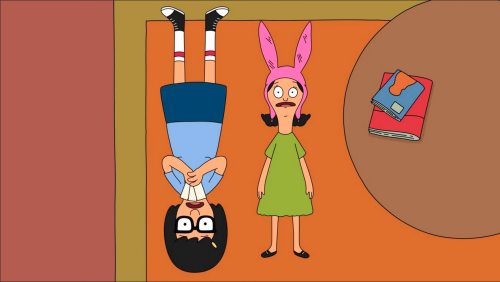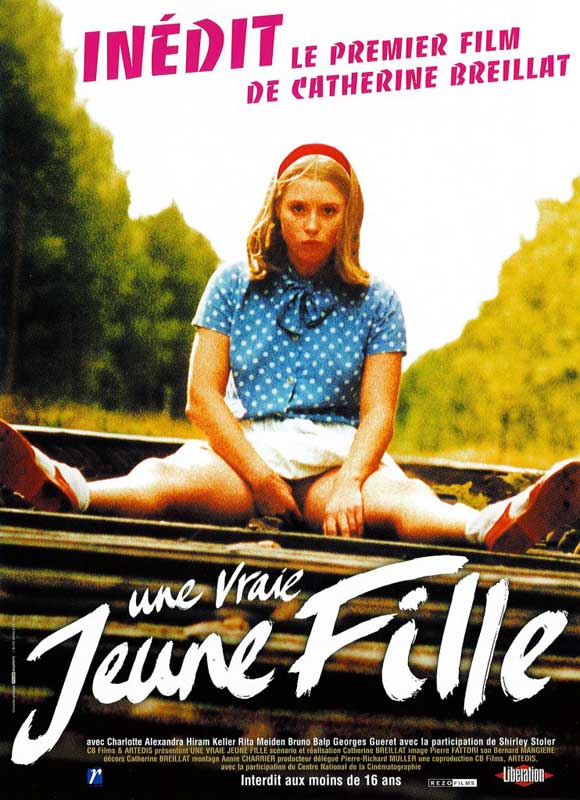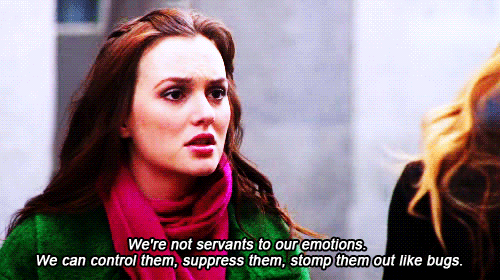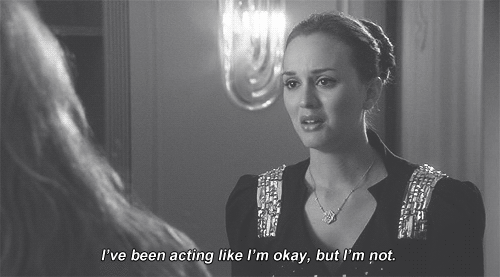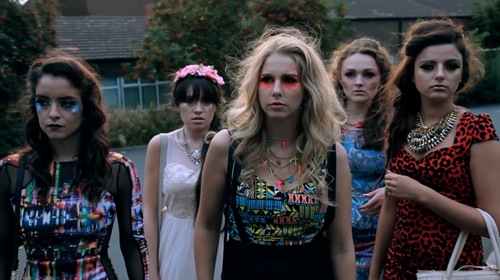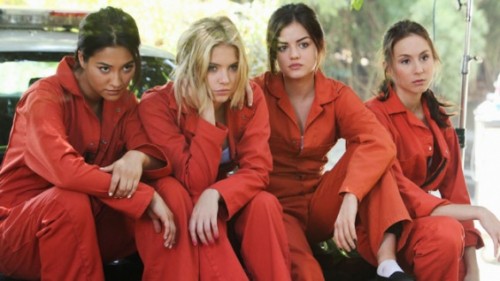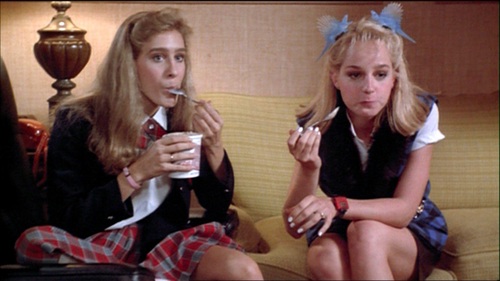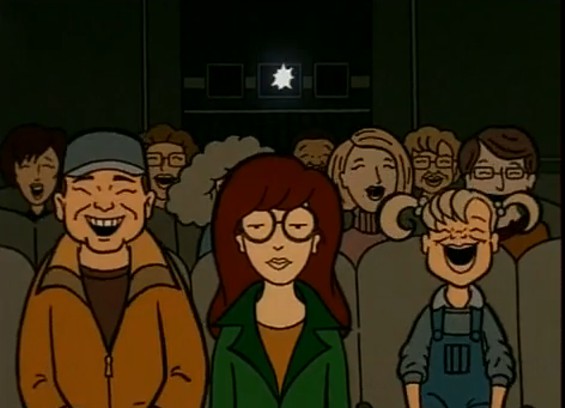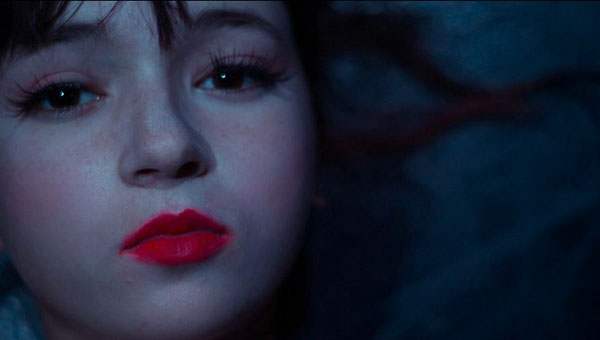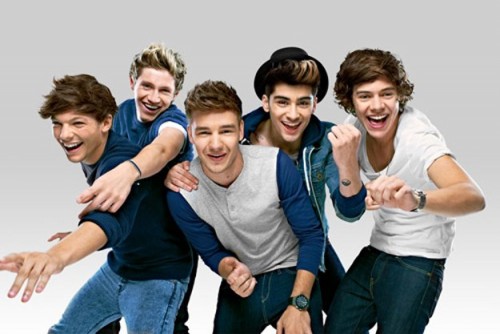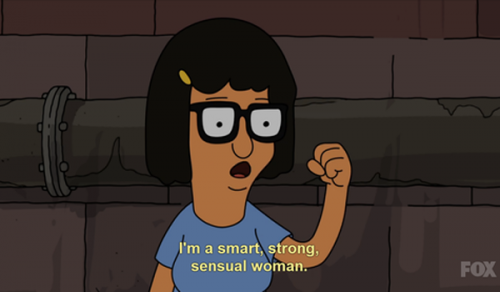This guest post by Becky Kukla appears as part of our theme week on Sex Positivity.
Society, education, media and film all contribute to the shame that young girls feel as they approach their teenage years. The shame of sexuality, the humiliation and disgust that goes hand in hand with newfound desires and feelings – most of which teenage girls are not equipped to handle due to the constant stigmatizing of female desire. Whilst this shaming is apparent within schooling (especially religious influenced education), it is also reinforced in countless forms of media which children are reading, watching, or reacting to on a day to day basis. Young girls are subtly, and sometimes not so subtly, reminded that their sexuality is a sin and should be silenced.
We see this trend in many television shows. My Wife & Kids, Fresh Prince, 8 Simple Rules, and even the “progressive” Modern Family use the tired old protective father trope. The teenage daughter of the family is portrayed as promiscuous and/or less than intelligent, and protecting her virginity becomes another day to day task for her father. Any sign of her sexuality is alarming to her family, especially the male relations. Shows like American Dad and Family Guy go the other way, and depend on routine jokes centered around ridiculing their teenage girls. Meg Griffith, for example, is constantly the butt of every joke in her family and this is only worsened as she gets older and becomes interested in boys. The “Meg Griffin” problem, as we’ve come to know it, is more symptomatic of writers being too lazy or uncomfortable with writing half-decent storylines for teenage girls. Especially as it means they may have to write about sexuality, sexual fantasies or just a silly little crush from the perspective of a fourteen year old girl. Scary stuff, right?
So many television shows, animated or otherwise, like to poke fun or ridicule their young teenage girls, especially when those girls start that painful and mostly awkward transition into “womanhood.” It’s an outdated concept, and one that seems to apply exclusively to women. Teenage girls must not show any sign of outward sexuality, they mustn’t be open about their sexual awakening, and the boy must make the first move. If you break any of these rules, you’re a slut.
This is where Bob’s Burgers comes into its own. I’m sure you are all aware that the character of Tina Belcher was originally intended to be a teenage boy, until the writers realised that it was much more exciting and interesting to have a young girl who is so confident of herself, her sexuality and her fantasies. We rarely see this in films or on television, especially as Tina receives full support from her parents in everything she does; from writing erotic friend fiction to dating two boys at once. Honestly, Tina Belcher is the role model young girls have been waiting for, and I’m so glad she’s finally arrived. However, “Boys 4 Now” – the episode that made me really believe Bob’s Burgers is *probably* the best show I’ve ever watched – deals with Louise getting her first crush. Rage-filled, insane, absolute genius Louise gets a crush on a boy. Unsurprisingly, she does not take this news well.
A brief synopsis of the episode: Linda and Bob have to take Gene to the Table Laying Finals (yes, it’s exactly what it sounds like), so Louise is stuck tagging along to a Boys 4 Now concert with Tina. At first Louise is distinctly disinterested, perplexed and annoyed by all the pubescent girls who are crying and screaming at the boy-band onstage. That is until Louise lays eyes on Boo Boo – the band’s youngest member. She is transfixed–partly consumed by love, partly horrified at herself. She can’t help but look at him, enchanted by his singing and his youthful face. “Who the frick am I!?” she exclaims to herself in the toilets, trying to force the crush out of her system. It’s no good. Louise has been bitten by the love-bug.
Louise, as a character, largely regards Tina with both disinterest and derision. Louise doesn’t understand her sister’s obsession with boys and butts, and often the two of them have very little in common. However, in “Boyz 4 Now,” Louise confronts her crush head on by revealing it to Tina, as she already has an acute awareness that Tina has been through these feelings before. There is no judgement, no mockery – just the simple understanding that this is perfectly normal, and that Louise has got it bad. Louise turning to Tina is a sign of respect, showing that Louise sees Tina’s own crushes as legitimate issues and that Tina is the expert to be consulted. It’s a moment of bonding between the two sisters who, before this moment, never really had anything to connect over.
Frequently, in other television shows, our young female character will change beyond recognition as they start to become sexually aware, or to have sexual desires. Physically, and in their personality, girls are expected to become “a woman” as opposed to “a girl.” There are many phrases associated with this phase–brink of womanhood, blossoming, flowering… I could go on. What they all serve to mean, is that our young girl is now becoming a woman, and will change completely and forever. But in Bob’s Burgers, Louise manages to retain her own personality, despite having gone through an apparently life changing transition. She is still full of rage (“I want to slap his hideous face!”) and she still overreacts to the given situation (“I’m infected, pull it out!”). Louise proves that girls and women simply do not change as a result of becoming sexually aware and actually the experience of your first crush/losing your virginity doesn’t make any difference to who you are as a person. Despite popular culture claiming otherwise. Also, Louise is pretty on the money about how having a crush feels!
The affirmation of “Boyz 4 Now,” however, has got to be at the very end, after the girls have been kicked off the tour bus and Louise has succeeded in slapping Boo Boo in the face. Louise tells Tina that she is a strong woman, and questions how Tina can be alive if her life is just one long string of crushes. As Louise says, “It’s exhausting.” There is a clear moment of understanding between the two of them. Tina is a departure from the stereotypical female daughter on television. She’s a geek who masters her own sexuality and refuses to change for anyone. This context allows us to see how hard it is for Louise to express her own sexual desire, but that this expression is made so much easier by having Tina as an older sister. An unapologetic girl who wants to date the entire softball team and doesn’t see anything wrong with that. Why should she? Louise, when battling her next crush as is inevitable, will be in safe hands.
Whilst most TV shows try and shame young girls for having completely natural and human desires, Bob’s Burgers positively adores them for it. Praises them, relishes them and above all reminds them that it’s normal. The feelings, the sexy feelings, are all normal. And awesome. Tina and Louise’s crushes are never portrayed as gross or indecent. They are never downplayed, and the girls do not end up as the butt of some joke about how stupid teenage girls are or how funny it is that they obsess over a boy-and. It preaches that girls should never be ashamed of their fantasies or of that awkward phase that sits uncomfortably between girl and woman. It’s hard to negotiate, and mainstream TV often makes it even harder. Thankfully Bob’s Burgers is here to put it right.
Becky Kukla is a 20-something living in London, working in the TV industry (mostly making excellent cups of tea). She spends her spare time watching everything Netflix has to offer and then ranting about it on her blog.
